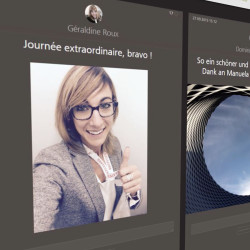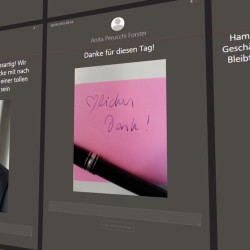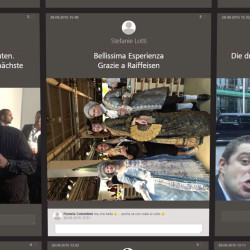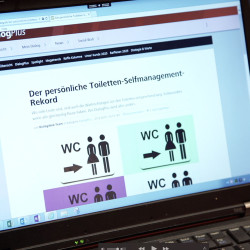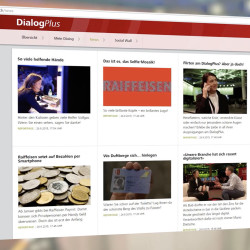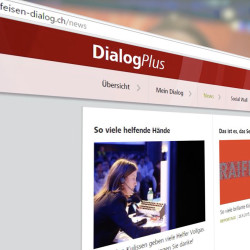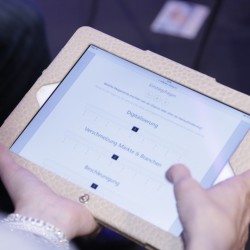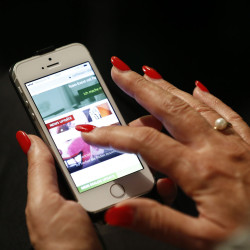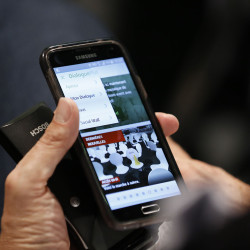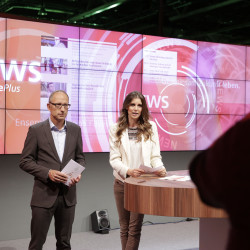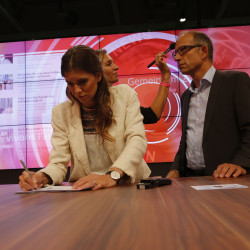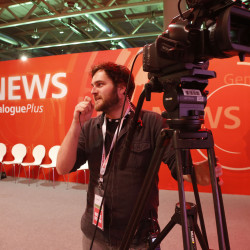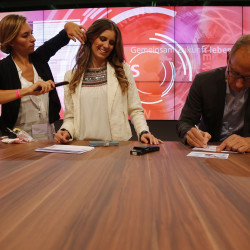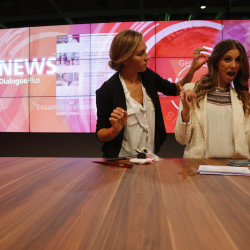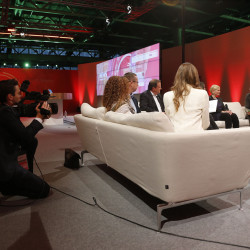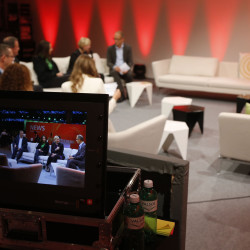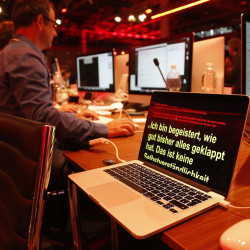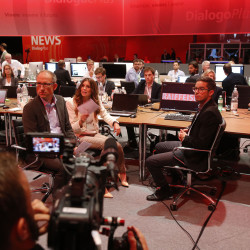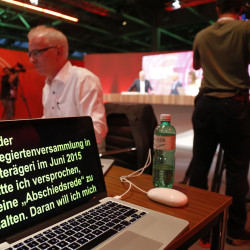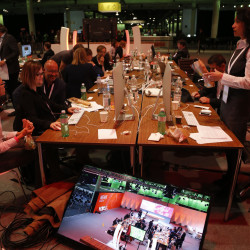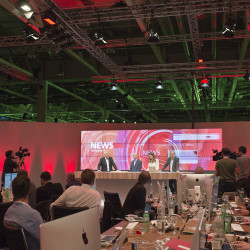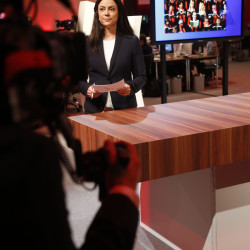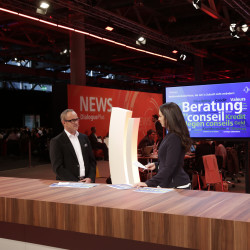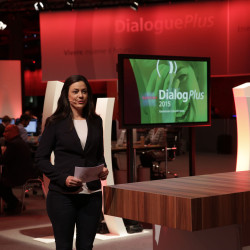A message needs to touch people to be heard, and if it is presented in a fascinating way it is unforgettable
Traditional information flows from A to B are quickly fizzling out. If A and B are involved in an exchange of information, then this is an emotional experience that will be remembered.
The task seems simple: Convey a message to 10,000 people. In the digital age, this can reliably be done with a few clicks, the confirmation that the message arrived at the correct destination is even displayed automatically. But whether the message was received and understood cannot be verified with one-way communication.
This requires dialogue.
With 10,000 people? In one day? In a direct and individual exchange of information and the clear confirmation of each recipient that the message was understood? With the assurance of having put something into motion for the future?
Yes, we can do this. The tool for this is called The Next Case.
When it comes to making a corporate strategy or a change process understandable to every employee, to inspire them and jointly take the company into a successful future with them, then the message must simultaneously be conveyed to all employees, presented in a fascinating way, thrillingly, compellingly, in one day. With The Next Case.
Content – this is how messages are sent today
Can a corporate strategy or change process really be sent to thousands of employees in one day with the certainty that the message was understood by all participants?
The message – the actual content that reaches all the participants on this one day and should be understood by them – requires a modern and media-friendly platform. In real life as well as digital life, the relationship between companies and employees has changed dramatically. On the one hand, people have become accustomed to direct contact and exchange via digital media and networks. On the other hand, there will always be the need to communicate with each other in person, people will never want to completely leave the real world, and certainly not when it suddenly relates to them personally, not just the world around them.
The Next Case combines these two worlds, makes in-person interaction and face-to-face communication possible and simultaneously links all participants to each other via a media-friendly platform. The central message is thus not only received by the participants, they can also reflect on it, comment, discuss, and evaluate it. On this one day it is ensured that the message was actually understood and important content can be implemented in a target-oriented way.
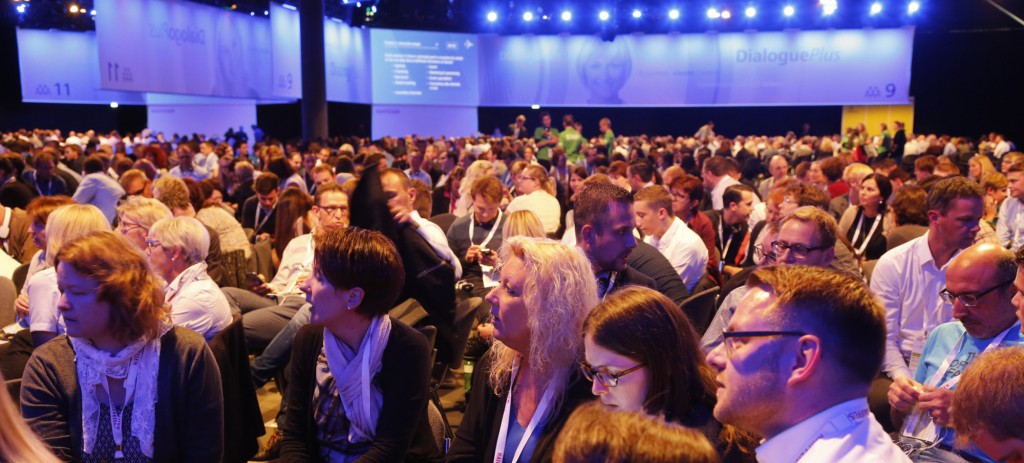
Motivation
How can thousands of people be motivated to come along on a trip? On a trip that can’t be boring? A trip which ends in daily business?
Any subject can be made interesting, there is simply no boring news, it is in the eye of the beholder – and that can’t be boring. This requires a good concept and a lot of good ideas to address specific issues from a new perspective, to present them interestingly, to pique curiosity, and to awaken emotions and fascinate people.
They are quite likely to be topics and agendas that sound typical, such as:
- Communicating a new strategy
- Increasing motivation
- Cementing personal identification with the company
- Listening to individual input and suggestions
- Creating a sense of community and belonging
- Guiding and assisting with a change process
- and much more
The tool
What is the right tool to enter into a dialogue with people? Can you pique the curiosity of the participants at the event on this day in advance, prepare them and let them prepare?
The Next Case uses an interactive, modern online platform for this. It is a central means of communication in advance of the event, on the big day itself, and continues to be afterwards. The platform has interactive features for the operators and users and also allows interaction between two or more individual persons.
The online platform is similar in appearance to a news portal, it is similar visually and with regard to content to successful sites in each customer’s respective country (e.g. Switzerland: www.blick.ch, www.srf.ch, www.tagesanzeiger.ch, etc.). The participants are provided with all the relevant information on the subject in advance, their curiosity is piqued, anticipation is built up weeks prior to day.
The presentation of the site is maintained in a professional, journalistic style, partly with in-depth and background information, but also with interesting and entertaining features. In brief: It is a site that is relevant to each target group, with a modern appearance (with videos and picture series, infographics and animated sketches), designed in a way that is compelling to read, and written interestingly.
Prior to the event, interaction starts with surveys on the topics and competitions. Participants thus learn to use the online tool in a casual way – which is not unimportant, since the tool will play a central role on the big day.
The big day
What does it ultimately matter if each participant feels like they experienced something very special on this day?
It is the drama, the way the message is delivered and how it is received by the participants. The aim is to put the participants’ fixed ideas or values into motion at the beginning of the day and to position them in a new form at the end of the day. The order and combination of the individual scenes follows the cause-effect principle. Each scene is based on the previous one, they follow a logical common thread to the next scene and finally lead to self-explanatorily to the aim of the message.
The sequence of the programme is ensured through direction with organised leadership and participants experience the path through each scene with increasing anticipation and finally recognise the sense and meaning of a message. The day is unforgettable because the participants are not spectators, they are part of the story, on this day they are the protagonists, and they are ambassadors of the message.
Where is the individual?
Does the opinion of a single participant mean anything at an event with 10,000 people? How is one quiet, single voice noticed?
All participants are on the online platform via wifi, they are always online and can share things, comment, or upload pictures on the social wall. The online platform is an integral part of The Next Case and is also used as a work tool in the workshops.
Playing with the dimension
How is it possible to locate an individual in a crowd of 10,000 people, to address them, to give them the feeling that they have an important role as part of the great whole?
2,500 to 10,000 people (upper number unlimited) can be reached via multimedia technology in a large room. A generally open layout with sophisticated lighting and audio and big projections for 150 to 500 people each gives the participants the feeling of being part of something big. This impression is reinforced in multiple with visual jingles and separators which create light effects and a strong audio track over the loudspeaker system.
A very large hall with countless large-scale projections, lighting effects, and a high power audio system allows each participant to experience the enormous dimension and at the same time give them the feeling they are standing in the centre.
Specifically, people are reached with the concept of The Next Case as a great whole via the live broadcast in the entire hall. Two hosts guide them through the day, take people by the hand so to say, lead discussions, and provide the desired structure – in multiple languages with simultaneous translation if required. There is breaking news four times a day: They are part of the great whole and connect participants in a kind of communal experience.
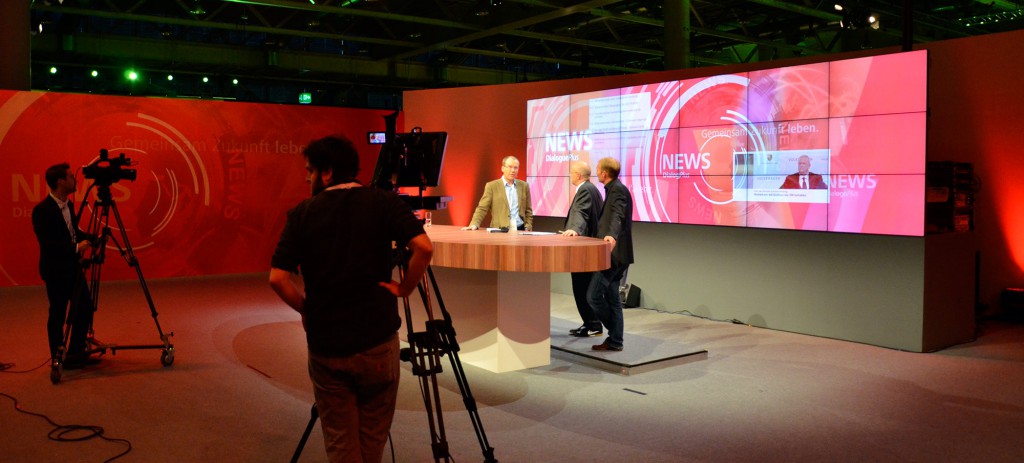
The newsroom
Build a fully functional newsroom for one single day?
Including a TV studio and web centre? With investigative journalists, photographers, reporters, and video journalists? Is that not excessive?
If you put it that way – yes. But it takes less than you think. In the centre, there is a real newsroom with the typically large control screen in the background. At 20-40 work stations, an experienced professional team produces information and stories all day. Stories and articles are published regularly like in a modern editorial.
Photographers produce photo spreads, reporters write reports, and video journalists are out filming statements and background stories. The emotional level is crucially important. In addition to substantive issues, there are also tabloid stories, stories to make you smile, and occasionally something sad. Reading the content will bring a lot of joy, and maybe even a tear. The content is distributed on the online platform – which the participants are now familiar with – and via “Breaking News”: a TV programme (four times over the day). It is produced live in the newsroom and distributed at the same time via countless projections in the hall.
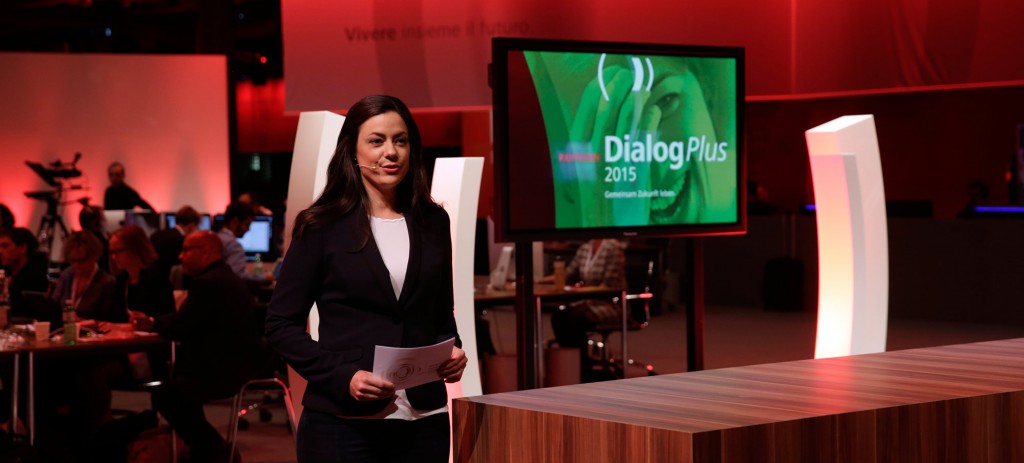
Breaking News
Can a recurring mini-news show, 4 to 5 times over the day, really create a shared feeling among 10,000 people?
In 4 to 8 minutes, the highlights of the last few hours are summarised. Short and concise, with graphics and video recordings. Survey results are reported and surprising stories from the workshops are shared.
Everyone experiences the highlights of the day together that they may have missed. This news creates a sense of community, the realisation that everyone is experiencing an unbelievable day together. And: Every participant can see themselves in the individual stories presented.
Workshops
Is it even possible to work productively at an event like this?
Yes, in manageable groups of 200 to 500 people each led by a moderator. In each forum of about 150 to max. 500 people, custom content and workshops can be implemented. Workshop moderators can upload videos, introduce topics, and start discussions.
Topics can also be discussed in small groups of five to six people. Individual surveys are also answered via the online platform. Each forum has its own evaluation which the workshop moderators then work with, reporting the results back to the forum group.
All this of course flows into the newsroom! Editors keep track of the events here and thus individual voices are noticed. The topics and opinions can then be used to enquire and evaluate in overall surveys.
